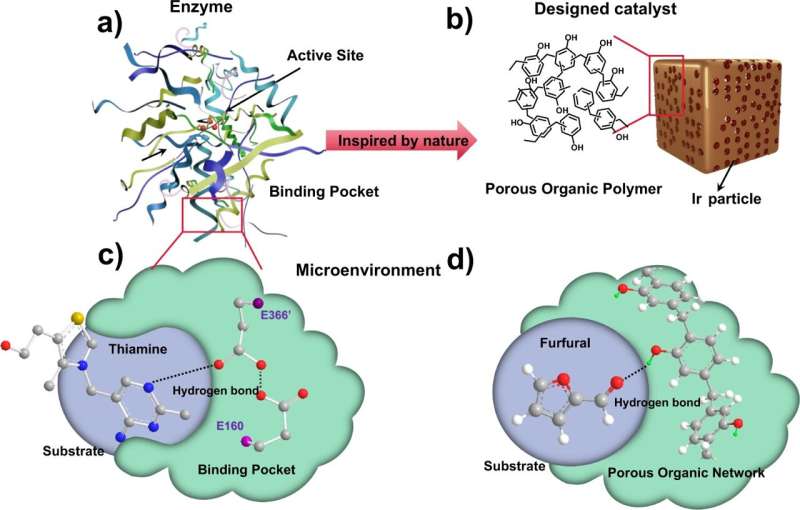Enzymes inspired microenvironment-controlled catalyst. Schematic diagram of (a) enzyme structure and (b) designed catalyst porous catalyst. c Hydrogen bond interaction between the substrate thiamine and the human transketolase. d Hydrogen bond interaction between furfural and the porous organic polymer. Credit: Nature Communications (2023). DOI: 10.1038/s41467-023-36015-z
Shi Song, associate professor from the Dalian Institute of Chemical Physics (DICP) of the Chinese Academy of Sciences (CAS), in collaboration with Prof. Dion Vlachos from the University of Delaware, have developed a new strategy for furfural conversion via hydrogen bond regulation.
The study was published in Nature Communications on Jan. 26.
In biomass upgrading, the selective conversion of biomass-based substrates is always difficult due to various functional groups.
In this study, the researchers designed a porous organic framework-based catalyst. And inspired by enzyme catalysis in nature, they regulated the microenvironment of the active site by changing the functional groups over the porous organic framework. The change in the microenvironment could control the interaction between substrate and catalyst, improving the activity and selectivity of carbonyl-containing substrates such as furfural.
They found that the nearby hydroxyl groups around the active site form hydrogen bonded with the carbonyl groups in the substrate, thereby changing the adsorption conformation of the substrate on the catalyst surface and realizing the activity and selectivity control of different substrates.
"The proposed synthetic strategy opens a new class of porous polymers for selective catalysis," said Shi.
More information: Song Shi et al, Selective hydrogenation via precise hydrogen bond interactions on catalytic scaffolds, Nature Communications (2023). DOI: 10.1038/s41467-023-36015-z
Journal information: Nature Communications
Provided by Chinese Academy of Sciences
























